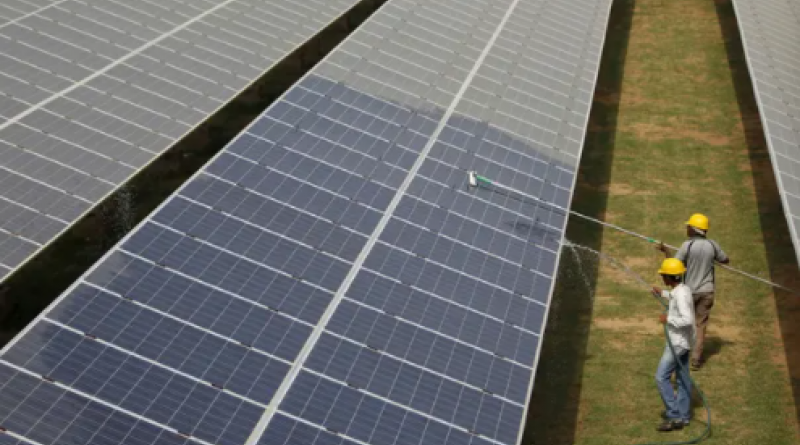Most new wind and solar projects will be cheaper than coal, report finds

Almost two-thirds of renewable energy schemes built globally last year expected to undercut coal costs.
Almost two-thirds of wind and solar projects built globally last year will be able to generate cheaper electricity than even the world’s cheapest new coal plants, according to a report from the International Renewable Energy Agency (Irena).
The agency found that the falling cost of new windfarms and solar panels meant 62% of new renewable energy projects could undercut the cost of up to 800 gigawatts (GW) worth of coal plants, or almost enough to supply the UK’s electricity needs 10 times over.
Solar power costs fell by 16% last year, according to the report, while the cost of onshore wind dropped 13% and offshore wind by 9%.
In less than a decade the cost of large-scale solar power has fallen by more than 85% while onshore wind has fallen almost 56% and offshore wind has declined by almost 48%. Francesco La Camera, Irena’s director general, said the agency’s latest research proved the world was “far beyond the tipping point of coal”.
He said: “Today renewables are the cheapest source of power. Renewables present countries tied to coal with an economically attractive phase-out agenda that ensures they meet growing energy demand, while saving costs, adding jobs, boosting growth and meeting climate ambition.”
In Europe, the cost of a new coal plant would be well above the cost of new wind and solar farms including mandatory carbon prices. The report found that in the US renewable energy could undercut between three-quarters and 91% of existing coal-fired power plants, while in India renewable energy would be cheaper than between 87% and 91% of new coal plants.
Replacing hundreds of existing coal plants with unsubsidised renewable energy sources could save $32.3bn (£22.8bn) every year in energy system costs and avoid about 3 gigatonnes of CO2 annually, the report said.
The carbon saving from phasing out 800GW of coal power capacity would be the equivalent of shaving 9% from the world’s energy-related emissions last year, according to the report, or 20% of the carbon savings needed by 2030 to help limit global heating to 1.5C above pre-industrial levels.
The report predicts the cost of renewable energy will continue to fall in the coming years. Over the next two years three-quarters of all new solar power projects will be cheaper than new coal power plants, and onshore wind costs will be a quarter lower than the cheapest new coal-fired option.
“The trend confirms that low-cost renewables are not only the backbone of the electricity system, but that they will also enable electrification in end uses like transport, buildings and industry and unlock competitive indirect electrification with renewable hydrogen,” the report said.
23 June 2021
The Guardian





